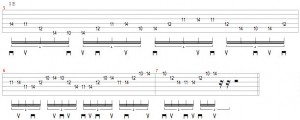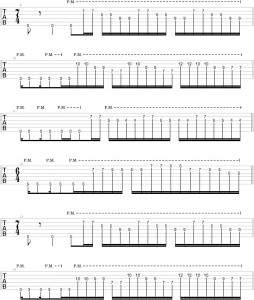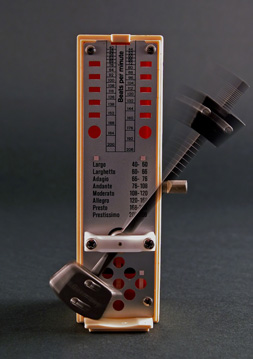One of the most essential things that a guitar player can try to develop is the independence of fretting hand digits (equal control over every finger). There are lots of exercises that help to achieve this, and I think one of the best ones is the common 1-2-3-4 chromatic exercise across all strings. It can seem simple, but playing all the different permutations (1-2-3-4/1-2-4-3-/1-3-2-4/1-3-4-2/1-4-3-2/1-4-2-3/ and so on) with a balanced touch and good time while only using hammer-on’s and pull-off’s can be really demanding. In the long run, however, such control can be truly effective, and will open many doors that allow for more freedom over difficult and often awkward permutations/phrases.
I would suggest starting with 3-note patterns (1-2-4/1-4-2/2-1-4/2-4-1/4-2-1/4-1-2), to move on eventually to 4-note patterns like 1-2-4-2, and of course groups of five, six, and seven notes, in essence always expanding on the last group you left off on! It’s a lot of work, and to cover all this material (hundreds of permutations) might take a long time, but it’s a fight worth investing your time and effort into!
The step that should follow after the previous one is mastered is to find our own favorite combinations and try to put them together in a more creative and musical way.
Example 1:

Mixing different groups will not only develop our fingers so that they can operate in a truly independent manner but will also allow us to create some interesting rhythms. Finally it will also prevent us from constantly accenting too many of the downbeats.
Example 2:

Now using the same linear idea (same notes) let us play awhile accenting the downbeats instead of the off beats. This will force us to play triplets, quintuplets, sextuplets, and even septuplets; helping developing our sense and understanding of different rhythmic groupings: a great way to build up a very solid technique, and at the same time to expand our rhythmic vocabulary.
Example 3:

In this final example I have tried to create a musical phrase that takes advantage of multiple finger combinations, as well as creating wide intervallic leaps via multiple string skips. The rhythmic combinations and wide interval leaps help to make the phrase unpredictable to the listener.
As you can hear by the examples I have recorded, it is a good idea to play all these lines and licks along side with a MIDI files so that you can learn to control the rhythmic changes in the phrases you have created and/or practice along to.
Example 4:

I hope this column really helps those who read it; this is a very important part of the physical mechanics of playing the guitar! Awhile some of these exercises may seem tedious at first, they help to break down physical barriers that would otherwise plague the development of certain more complex musical phrases and passages.
Click HERE to download the accompanying practice midi files for this lesson.
Stay tuned for more columns that will deal with the technical difficulties players face in trying to master the mechanical side of guitar playing!
















